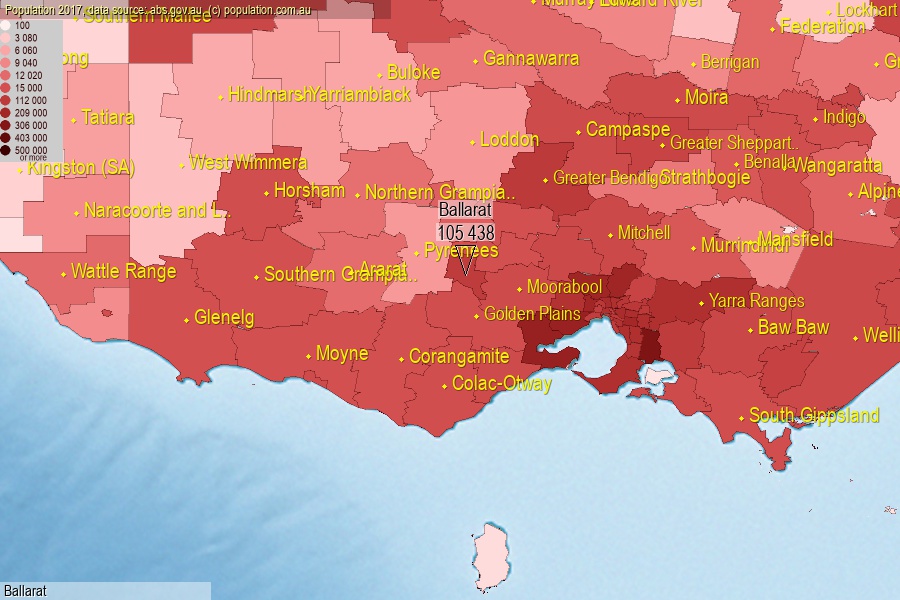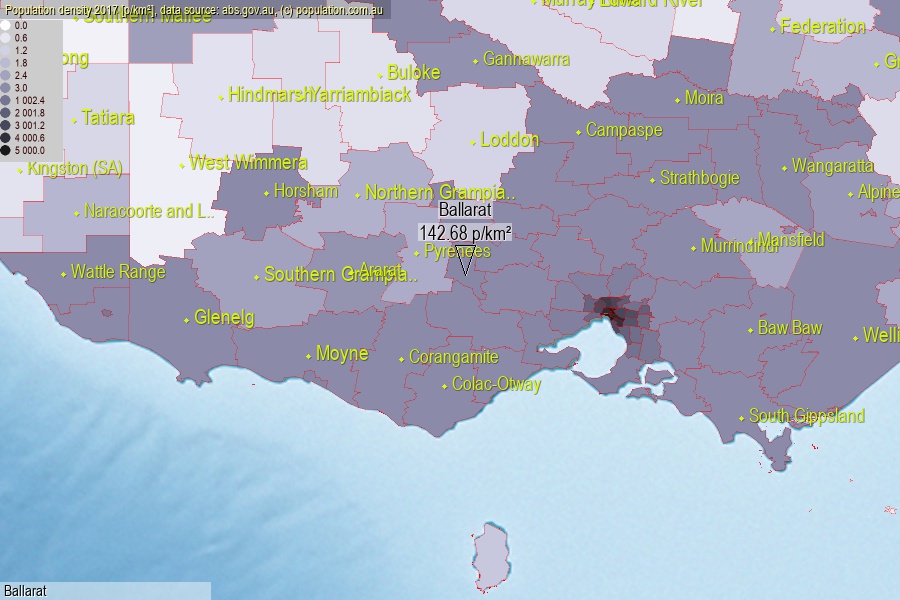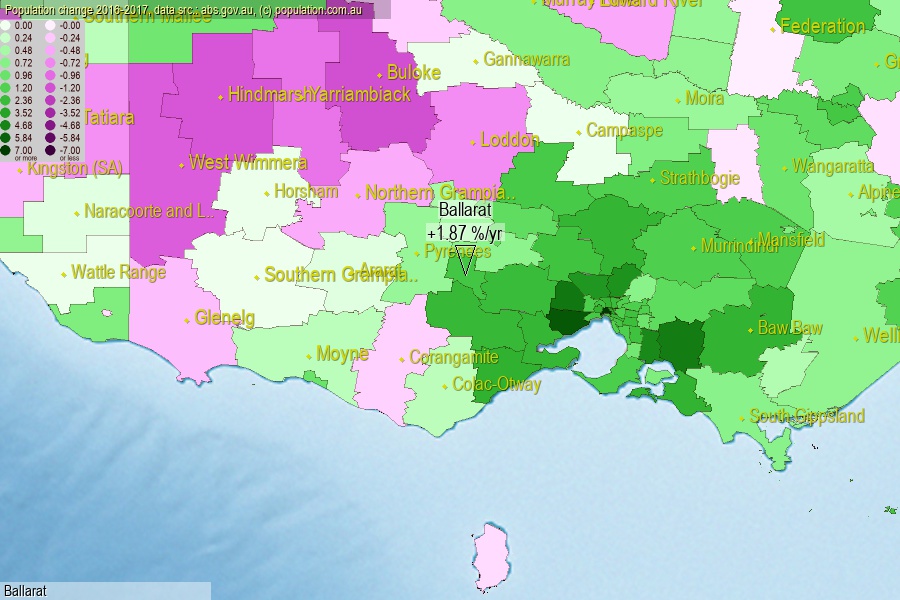 population.com.au
population.com.auLast official estimated population of Ballarat City (as Local Government Area) was 105 438 people (on 2017-06-30)[2]. This was 0.43% of total Australian population and 1.64% of VIC population. Area of Ballarat is 739.00 km², in this year population density was 142.68 p/km² . If population growth rate would be same as in period 2016-2017 (+1.87%/yr), Ballarat population in 2025 would be 122 307. [0]



Click to enlarge. Ballarat is located in the center of the images.
Population [people], population density [p./km²] and population change [%/year] [2]
[1996-2001] +0.80 %/Y
[2001-2002] +1.01 %/Y
[2002-2003] +1.23 %/Y
[2003-2004] +0.69 %/Y
[2004-2005] +1.05 %/Y
[2005-2006] +1.15 %/Y
[2006-2007] +1.33 %/Y
[2007-2008] +1.98 %/Y
[2008-2009] +2.08 %/Y
[2009-2010] +2.15 %/Y
[2010-2011] +1.96 %/Y
[2011-2012] +1.62 %/Y
[2012-2013] +1.67 %/Y
[2013-2014] +1.60 %/Y
[2014-2015] +1.57 %/Y
[2015-2016] +1.99 %/Y
[2016-2017] +1.87 %/Y
[0] Calculated with linear interpolation from officially estimated population
[1] Read more about LGA and Australian Statistical Geography Standard (ASGS) on abs.gov.au
[2] Population data from Australian Bureau of Statistics (Population and density: 2017; change: 2016-2017)
[3] Digital Boundaries: Australian Statistical Geography Standard (ASGS) 2016.